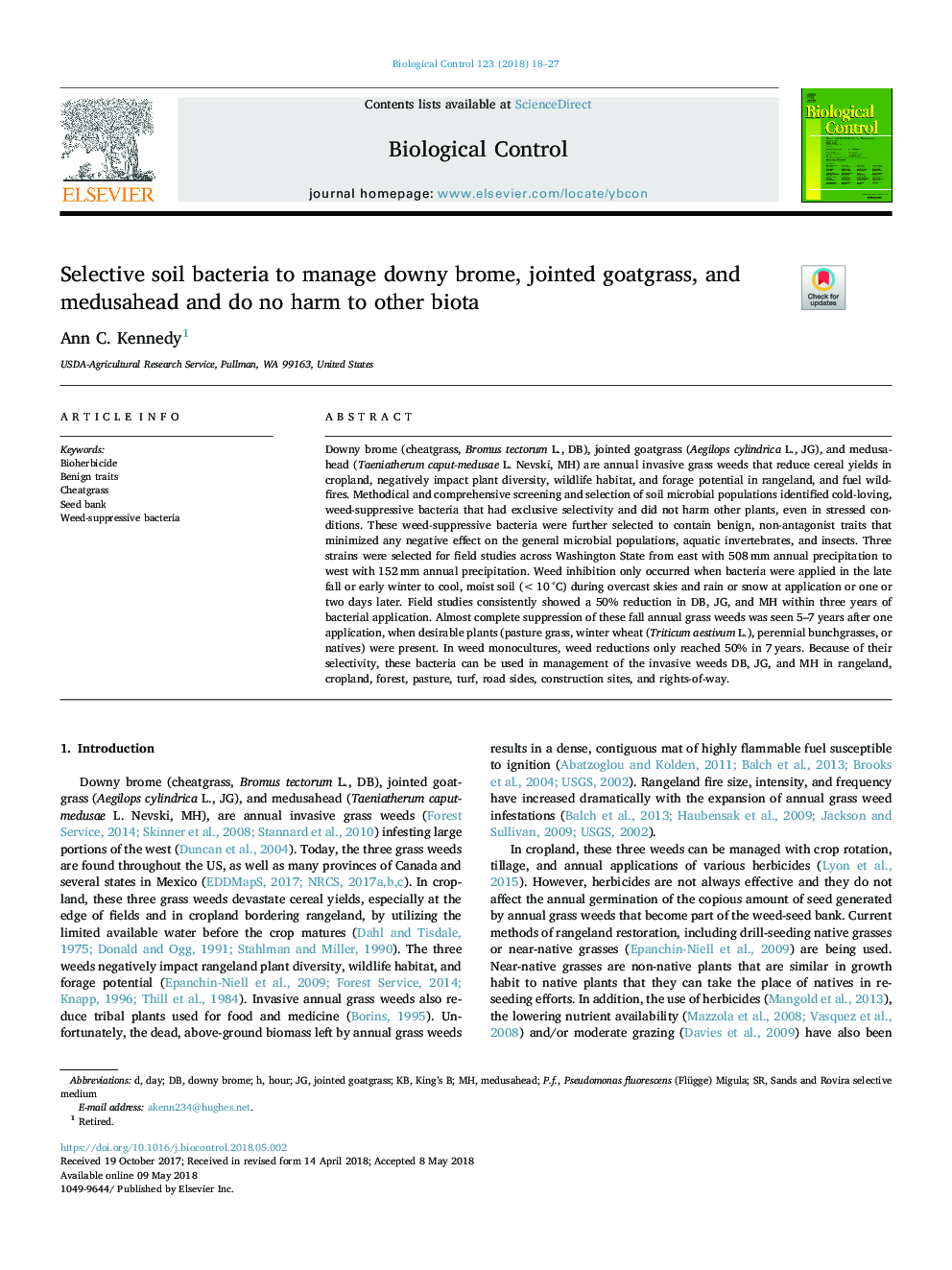| Article ID | Journal | Published Year | Pages | File Type |
|---|---|---|---|---|
| 8877582 | Biological Control | 2018 | 10 Pages |
Abstract
Downy brome (cheatgrass, Bromus tectorum L., DB), jointed goatgrass (Aegilops cylindrica L., JG), and medusahead (Taeniatherum caput-medusae L. Nevski, MH) are annual invasive grass weeds that reduce cereal yields in cropland, negatively impact plant diversity, wildlife habitat, and forage potential in rangeland, and fuel wildfires. Methodical and comprehensive screening and selection of soil microbial populations identified cold-loving, weed-suppressive bacteria that had exclusive selectivity and did not harm other plants, even in stressed conditions. These weed-suppressive bacteria were further selected to contain benign, non-antagonist traits that minimized any negative effect on the general microbial populations, aquatic invertebrates, and insects. Three strains were selected for field studies across Washington State from east with 508â¯mm annual precipitation to west with 152â¯mm annual precipitation. Weed inhibition only occurred when bacteria were applied in the late fall or early winter to cool, moist soil (<10â¯Â°C) during overcast skies and rain or snow at application or one or two days later. Field studies consistently showed a 50% reduction in DB, JG, and MH within three years of bacterial application. Almost complete suppression of these fall annual grass weeds was seen 5-7â¯years after one application, when desirable plants (pasture grass, winter wheat (Triticum aestivum L.), perennial bunchgrasses, or natives) were present. In weed monocultures, weed reductions only reached 50% in 7â¯years. Because of their selectivity, these bacteria can be used in management of the invasive weeds DB, JG, and MH in rangeland, cropland, forest, pasture, turf, road sides, construction sites, and rights-of-way.
Related Topics
Life Sciences
Agricultural and Biological Sciences
Agronomy and Crop Science
Authors
Ann C. Kennedy,
